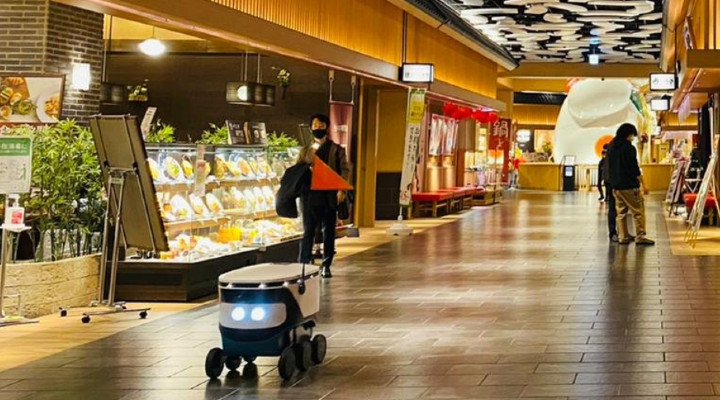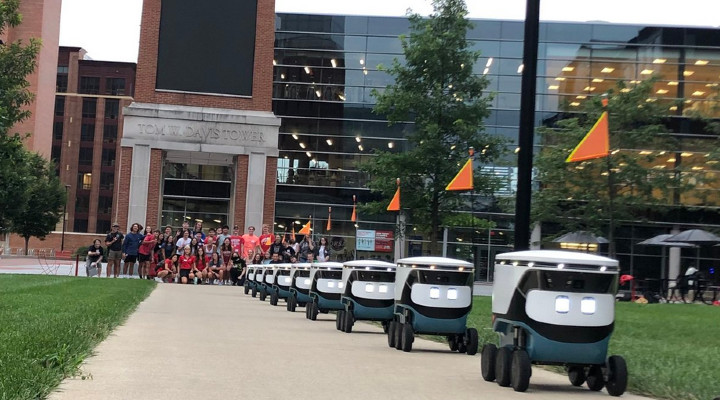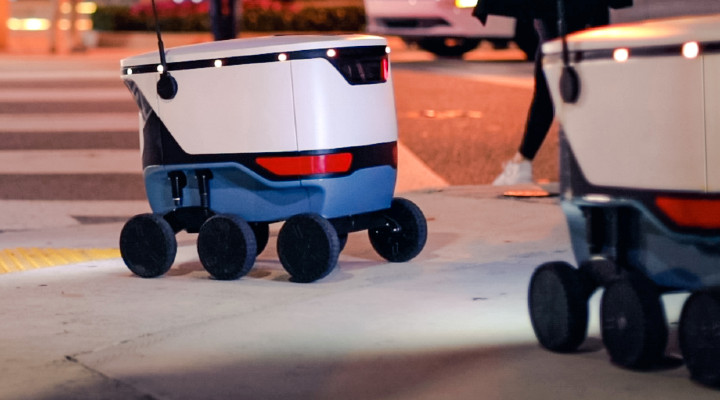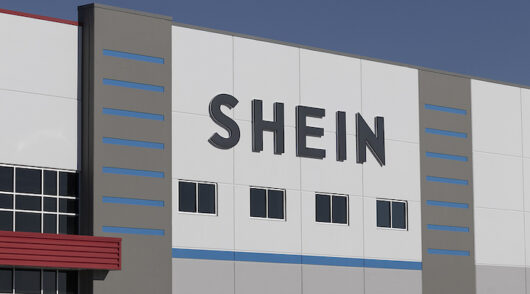It was in December last year that Uber Technologies Inc. and Cartken, a leading robotics company, announced a new partnership for food deliveries via six-wheeled automated robots in Miami, Florida, US. Now the service has been extended to Fairfax, Virginia too.
Uber and Cartken will begin operating with select merchants at the Mosaic District, a 31-acre shopping and dining district.
These AI powered robots are equipped with multiple sensors and cameras to allow them to stop on a dime to avoid collisions and choose routes with the fewest hazards. According to TechCrunch, these electric robots have a cargo capacity of around 1.5 cubic feet.
According to the publication, the company has said that its robots have the ability to operate fully autonomously under certain conditions. If it encounters something unexpected, it will be able to reach out to a remote operator for assistance.
Cartken has also partnered with GrubHub, a leading online and mobile food ordering and delivery platform on college campuses.
This partnership was unveiled in June last year, and GrubHub partners with more than 250 college campuses across the US, so the potential is huge.
It has been stated that the partnership with Cartken for autonomous robot deliveries is a seamless fit for campus environments, which are notoriously difficult for cars to navigate. These robots can navigate pavements, crosswalks and pedestrian paths.
Cartken’s robots can operate at up to three miles per hour on campus and handle various weather conditions, including rain and snow.

Still early days
According to Gihan Perera, a business futurist, he feels these partnerships are promising, but still have a long way to go.
“It’s promising because it automates last-mile delivery and makes it more efficient and less expensive. But at this stage, it still has a bit of a ‘gimmick’ feel to it, and customers might be won over by the novelty factor more than anything else,” he told Inside Retail.
While sidewalk robots are obviously cheaper for retailers, if that does not translate into a reduced fee to the customer, Perera feels that it will not offer any obvious customer benefit. In fact, he feels it might be worse as it removes the human touch.
“Compared to drones, sidewalk robots offer real advantages because they are safer, less intrusive, and provide faster and more cost-effective delivery,” he said.
Of course, he is of the opinion that sidewalk robots won’t completely replace these other delivery methods, but can be deployed in situations that don’t require, say, the human connection of couriers or the flexibility of drones to access more remote destinations.
New possibilities
In the greater scheme of things, Perera feels that the biggest impact for businesses will come from reduced labour costs. This could lead to companies offering new services such as faster on-demand delivery, multiple deliveries and weekend deliveries.
“Large retailers, such as Amazon provide some of these features already, but can only do it cost-effectively because they have scale. These delivery robots could make smaller businesses equally competitive,” he added.
Nonetheless, there could be some challenges on the horizon. Regulatory hurdles, including the complexity of working in different jurisdictions could become a factor as local councils could have their own opinions about this kind of technology.
Public perception is also another issue. Perera thinks some people may be hesitant or uncomfortable interacting with robots on the sidewalks. Other potential backlashes could also lead to theft or vandalism as well.

Teething issues
He also cites privacy and security concerns as another issue. Since these companies will be collecting private data about customers, which could include photographs and video footage of their property, there is scope for abuse.
“There are safety concerns too, as these robots will be using the same sidewalks as young children, pedestrians, cyclists, skateboarders and e-scooter riders,” he stated.
In one case, back in September last year, Perera mentioned that an Uber delivery robot from Serve Robotics, simply went through a cordoned-off crime scene.
But it’s not all doom and gloom, he feels that if this platform is successful, Uber and Cartken could expand the service to other deliveries, including groceries and pharmacy supplies.
Broader adaptation
Perera feels that for sidewalk robots to succeed, engineers must solve the challenging problem of working in unpredictable, unsafe and uncontrolled environments, such as suburban streets.
“If people become accustomed to – and react positively to – the occasional delivery robot scooting past them on a walk, they are more likely to accept other forms of automation in the future,” he noted.
In the longer term, he feels that to mitigate the negative effects of automation, businesses need to consider how to bring their employees (and unions and other stakeholders) along on the journey.
This will include things like regular discussion forums, retraining workers for new roles, educating and empowering HR, and helping people work with – rather than instead of – the technology.






